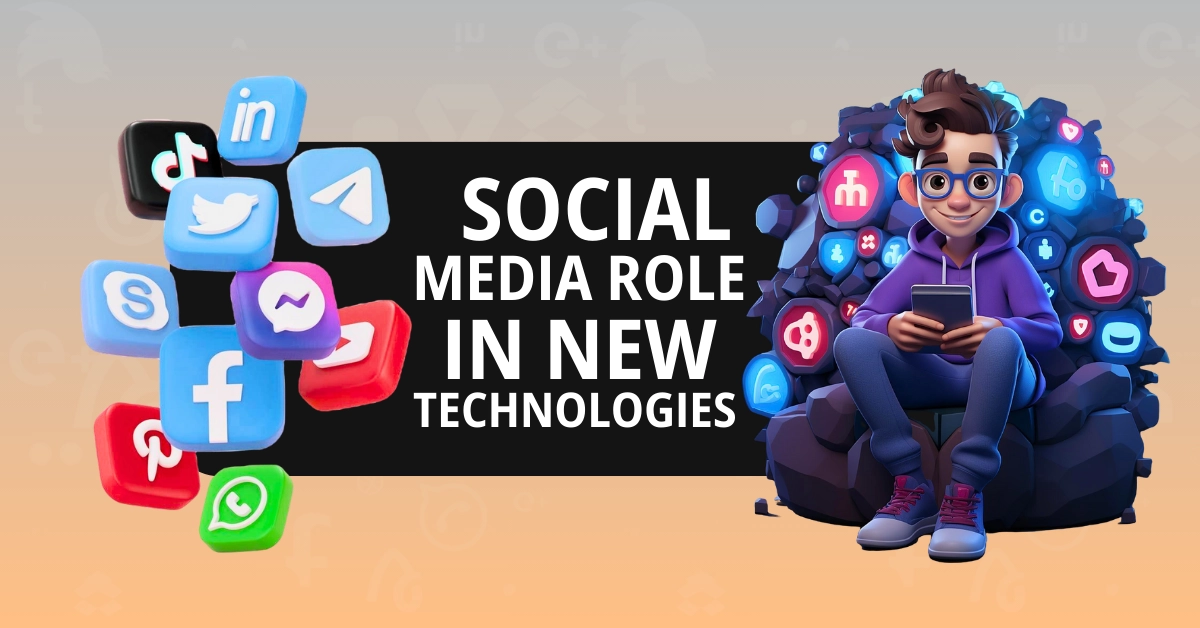If you leverage social media just for posting updates, it’s high time to reconsider your approach to your marketing strategy. Social media is about real-time engagement, so you can gain valuable insights from interactions with your followers. You can serve personalized content and make data-driven decisions based on data collected from your social media accounts.
But how does raw data turn into actionable insights? The answer is “with the help of business intelligence (BI).” Business intelligence covers strategies and technologies to analyze data and make sense of the vast amounts of insights generated by social media platforms.
Why should you care? The reason is that social media business intelligence lets you know exactly what your customers think about your brand and predict which content will go viral next week. The outcome? Tailored marketing campaigns to better meet customer needs, bolster customer service, and ultimately drive sales, among other benefits.
In this article, we’ll explore the role of business intelligence in social media, namely:
- How you can collect and analyze social media data;
- What key metrics to track;
- How to leverage BI tools for deeper insights.
Whether you’re looking to boost your social media presence or make informed business decisions, this page will provide guidance and practical tips to get you started.
Understanding Social Media Business Intelligence: Definition and Benefits
Social media business intelligence (SMBI) is a term that consists of two components: business intelligence and social media. Thus, it combines social media analytics and BI to collect, analyze, and interpret data from social media to guide business decisions.
Social media is a powerful asset that constantly generates information about marketing activities and their effectiveness, including likes, shares, comments, and more. By using these social insights, brands can learn more about their audience’s demographics, interests, habits, etc.
Traditional BI focuses on structured data from internal sources like sales figures or inventory levels. In contrast, SMBI deals with both structured and unstructured data from social networks. As such, you can not only tap into hard numbers but also qualitative data from audio, chats, video, images, and other types of content.
For those who find navigating the complexities of SMBI challenging, there are professional agencies and freelance specialists who can provide expert advice and assistance (like Onilab).
The Importance of Social Media Business Intelligence
Why is SMBI so critical? There are billions of social media users nowadays. According to Statista projections, there will be 1.44 billion monthly active users on Instagram alone by 2025, or 31.2% of all internet users worldwide.
With BI tools, you can glean insights into this enormous audience based on key performance indicators (KPIs). Among the benefits of employing business intelligence in your social media strategy are as follows:
- improving social media performance;
- staying ahead of competitors;
- producing content that connects with your audience more deeply;
- the ability to identify trends, customer sentiment, and preferences;
- enhancing customer relationship management;
- optimizing marketing budget.
For example, you may spot problems through social media intelligence and respond promptly to address concerns. As a result, it increases customer satisfaction and fosters loyalty. You also learn what is effective and ineffective and allocate resources to the most profitable social media campaigns.
An essential component of social media BI is predictive analytics. It entails forecasting future trends based on past and present social media data analysis to predict what content will perform well in the future.
The next section will delve into how to collect this valuable data from social media platforms. Stay tuned!
Gathering Social Media Data: Methods and Metrics
1. Methods to Collect Social Media Data
How can you gather qualitative and quantitative data from social channels? To measure campaign success, you need to leverage dedicated solutions, such as:
- social media analytics tools (Hootsuite, Sprout Social, or Buffer): collecting social data, creating reports on engagement, reach, and more;
- social listening tools (Brandwatch or Mention): monitoring online conversations about your company, understanding brand perception and user sentiment;
- social media APIs (application programming interfaces): accessing raw data, building dashboards, and integrating social media with your BI tool.
Besides audience insights, you also need to analyze competitors’ strategies. One effective technique is competitor benchmarking. That’s where you compare your marketing campaign performance against competitors’ social media data using tools like Socialbakers and Rival IQ. What type of content are they posting? When are they most active? How do customers feel about your rivals?
Note: Collecting social media data must be done responsibly. This means ensuring data privacy and compliance with GDPR (General Data Protection Regulation), CCPA (California Consumer Privacy Act), and other regulations.
According to these rules, you must always obtain explicit consent when collecting personal details, use anonymized information whenever possible, and stick to secure data storage best practices. Encrypt information so that no one can intercept and read it and control access levels for the collected data.
2. Essential Metrics to Track
So, what KPIs and metrics should you zero in on for effective social media analytics?
- Engagement Metrics or Engagement Rate: likes, shares, and comments. They show content resonance;
- Reach and Impressions: the number of unique users who see your content and the total number of times your content is viewed. They demonstrate content visibility;
- Audience Growth and Demographics: the number of followers, how many of them are active, and their location. They help make data-driven improvements to your marketing strategy and content to meet followers’ preferences;
- Click-Through Rate (CTR) and Conversion Metrics: The percentage of users who click on a link in your post and how many of these clicks result in desired actions, such as purchases or sign-ups;
- Sentiment Analysis: the tone of user comments and mentions;
- Customer Support Metrics: the number of support requests received and resolved through social media;
- Return on Investment (ROI) of Your Marketing Efforts: (the revenue generated from your SMM efforts minus the costs associated with them) divided by the cost of social media investment * 100%.
Practical applications of social business intelligence are vast and impactful. You can fine-tune products and services, conduct market research, and evaluate the impact of your marketing campaigns on the sales funnel.
Five Best Business Intelligence Tools for Social Media
As mentioned earlier, analyzing social media data calls for specialized tools. Let’s overview some of the top solutions data scientists can utilize to visualize data from varied data sources, gain insights into their business strategy performance, and optimize their strategy workflow.
| Tool | Features | Benefits | Drawbacks | Best For | Pricing |
| Agorapulse | Reports, dashboards, customer sentiment analysis, ROI reports, listening reports, custom reports | Comprehensive metrics, sentiment labeling, ROI insights, brand awareness score | Doesn’t support lesser-known or niche platforms, some complain about a glitchy and not-so-intuitive mobile app | Medium to large businesses needing detailed social media performance analysis | $69 per user/month (Billed monthly) for 10 social profiles |
| Audiense | Audience information, influencer identification, keyword and hashtag analysis, audience segmentation | Detailed audience analysis, influencer insights, competitor research | Limited platform integrations, focused mainly on X (Twitter) | Businesses concentrating on X marketing and audience segmentation | $1199/month for the social intelligence package |
| Board | Data modeling, forecast simulations, customizable dashboards, scorecards | Advanced data analysis and forecasting, highly customizable | Steep learning curve, can be expensive for small businesses | Large enterprises needing robust BI and forecasting | Custom pricing |
| Cyfe | Premade templates, custom dashboards, multi-platform integration, competitor analysis | Easy-to-use, comprehensive multi-channel tracking | Basic analytics compared to other advanced tools | Small to medium businesses needing integrated social media tracking | $19/month |
| Domo | Over 1,000 data connections, custom visualizations, cross-departmental insights | Extensive data connectivity, accessibility, robust collaboration features, data visualization | Cost-prohibitive, especially for small businesses, with many features missing or lacking (only available through add-ons) | Large organizations needing extensive data integration and Internet of Things (IoT) analytics | Free trial, then custom pricing |
To Sum Up
So, why should you implement social business intelligence? Today’s social media landscape provides numerous possibilities for brands to gain more value from social media data to innovate their marketing strategies and reach business objectives.
Social business intelligence is increasingly important. It provides a comprehensive understanding of your audience, allows for more targeted campaigns, and allows you to build deeper connections with potential customers.
As such, choose a social listening tool or other data analysis solutions that suit your needs. Focus on relevant metrics (audience demographics, location, post reach, engagement, etc.). Embrace the power of SBI and let your sales skyrocket, and your brand reputation flourish.










